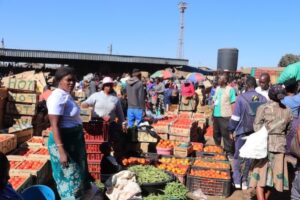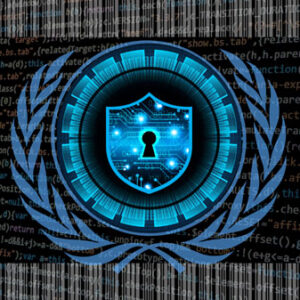
Active Citizens, Africa, Civil Society, Climate Action, Climate Change, Cooperatives, Development & Aid, Economy & Trade, Editors’ Choice, Environment, Featured, Food and Agriculture, Food Security and Nutrition, Food Sustainability, Headlines, Sustainable Development Goals, TerraViva United Nations, Trade & Investment

Farmers, traders and consumers at the Mbare Musika Territorial Market in Harare, Zimbabwe. Credit: Isaiah Esipisu/IPS
– African policymakers, local leaders and the private sector have been asked to create an enabling environment that will help African traders and farmer folks build reliable systems for food security and resilience through territorial markets.
During a week-long 2024 Africa Agroecological Entrepreneurship and Seed Festival in Harare, Zimbabwe, experts observed that persistent crises have shown the importance of resilient close-to-home ‘territorial’ markets that feed billions of people every day—from public markets and street vendors to cooperatives, from urban agriculture to online direct sales, and from food hubs to community kitchens.
“For instance, following Russia’s invasion of Ukraine, global food prices spiked by 15 percent, forcing policymakers around the world to question how to reduce dependency on volatile global markets and strengthen food self-sufficiency,” said Dr. Million Belay, the General Coordinator at the Alliance for Food Sovereignty in Africa (AFSA).
“Further, questions have been raised about how people are actually fed and by whom, prompting us to ask: in this century of crisis, what kinds of food supply chains and markets can build resilience and help fulfill the right to food—nourishing people around the world more sustainably and equitably?” asked Belay.
To answer the question, experts are calling for policies and a sound working environment that will empower territorial markets that promote dietary diversity and affordable nutritious foods for all, allow producers and food workers to retain control over their livelihoods, and produce food that is adaptable to climate change shocks and emerging crises.
These markets have been broadly defined as markets that are centered on small-scale agroecological food producers and business owners that produce and sell a variety of commodities, and often meet the preferences of the majority of farmers, traders and consumers.
Studies have shown that these markets play a crucial role in making food accessible and affordable, especially for low-income populations in the Global South, allowing for the purchase of small and flexible quantities of food, price bargaining, informal credit arrangements, and being located in or near low-income neighborhoods.
A new study launched on the sidelines of the Harare event that culminated into the fifth Biennial Africa Food Systems Conference, however, shows that profit-oriented corporate value chains are highly concentrated in Africa’s market places.
The report, titled ‘Food from Somewhere,’ by the International Panel of Experts on Sustainable Food Systems (IPES Food), finds that just seven grain traders control at least 50 percent of the global grain trade, six major corporations control 78 percent of the agrochemical market, the top eight carriers of freight account for more than 80 percent of the market for ocean freight capacity and globally, 1 percent of the world’s largest farms control 70 percent of the world’s farmland.
This, according to experts, amounts to a corporate capture of Africa’s food systems.
The report is therefore advocating for a paradigm shift, urging governments to reinvest in local and regional supply infrastructure, relocalize public purchasing and develop food security strategies for a more resilient and equitable approach to food security.
“The problem for smallholders is not of being connected to markets (most are already involved in markets) but rather the conditions of their access and the rules and logics by which markets operate—who determines prices and on what criteria, who controls the costs of production, who holds market power, among other issues,” said Mamadou Goïta, a member of IPES and the lead author.
A spot check at the Mbare Musika territorial market in Harare found a variety of foodstuffs sourced from all eight regions of Zimbabwe, among others from neighboring countries, such as apples and other fruits from South Africa, fish and ginger from Mozambique, groundnuts from Malawi, sorghum from Botswana, as well as grapes from Egypt and tamarind from Tanzania, among others.
“This is the central hub for smallholder farmers and traders, supporting over seven million people from all over Zimbabwe and other parts of the continent,” said Charles Dhewa, Chief Executive Officer, Knowledge Transfer Africa (KTA), whose flagship known as eMkambo (eMarket) is to create a physical and web-based market for agriculture and rural development, integrating the use of mobile phones and the internet to create, adapt and share knowledge.
Mbare Musika Market, which is in the outskirts of Harare, is located next to the main bus-park, through which food is brought in using informal means such as passenger buses and vans from different parts of the country, in small and big quantities, and of different varieties and qualities.
“The evidence is clear—localized food systems are vital for feeding an increasingly hungry planet and preventing food insecurity and famine,” said Shalmali Guttal, the Executive Director of Focus on the Global South. “They provide nutritious, affordable food and are far more adaptable to global shocks and disruptions than industrial supply chains,” she added.
Jennifer Clapp, professor and Canada Research Chair in Global Food Security and Sustainability at the University of Waterloo, Canada, pointed out that during this time of rising hunger and ecological fragility, global industrial food chains will be catastrophically liable to break down under the strain of frequent crises.
“To have a chance of reaching the world’s zero hunger goal by 2030, we need to re-imagine our food systems, and we need to bolster the food markets that serve the poor,” she said.
IPS UN Bureau Report




